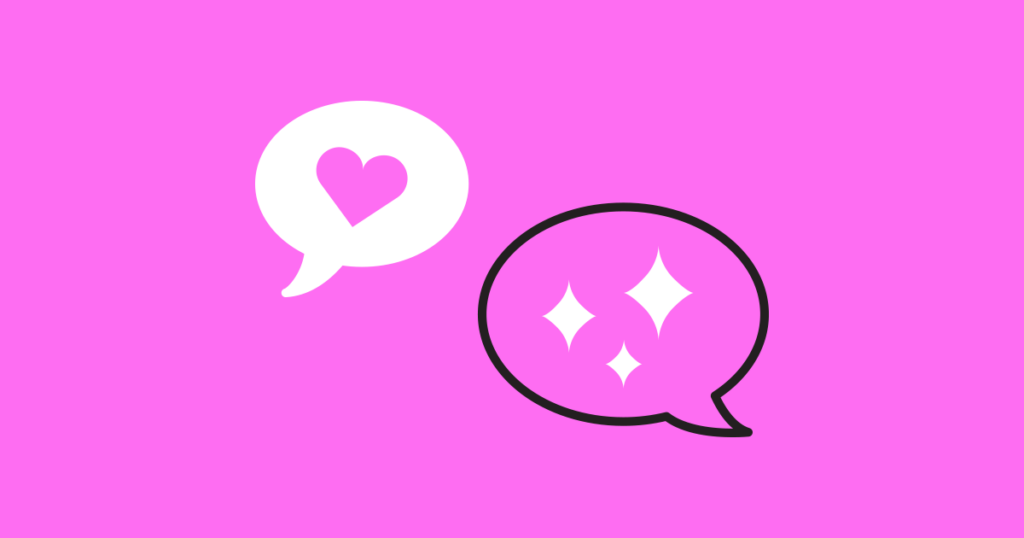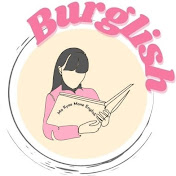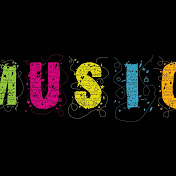Distance in English
Activities (Lesson Plans)
- Compliments in American English
- Compliments in American English Handout
- Compliments in American English Slides
- Greetings in English for Chinese EFL Handouts
- Greetings in English for Chinese EFL
- English Vs. Spanish Invitations
Compliments in American English
Practical Ideas & Resources
Resources in this section curated by: Miranda Burrows, Niki García-Holmes, Ailsa Li, Ryane Sergent

Read Online Reviews
Reviews of restaurants, hotels, and shops can be found on Google Maps, (where this review for the Agate Motel was found), Yelp, Amazon, NextDoor.com and many other sites). These sites show contextualized written compliment language that can serve as models for learners.
Learners should note that non-anonymous and semi-anonymous reviewers (such as those found on AirbNb, Etsy, eBay, and Depop) may use more complimentary language and downplay minor negative experiences in order to maintain their own online reputations. Non-anonymous reviews decrease the amount of power reviewers have, since receivers of the reviews (sellers or business owners/managers) may retaliate in response to negative feedback (by leaving negative feedback of their own!).
Such review sites are prime examples of how compliments tend to be exaggerated in American English. The example review here makes use of the common "I/we love + noun" syntactical construction identified by Herbert (1986): "My family loves this motel!" The phrase "...this is the place to be!”, the use of the emphasizing adjective "super" seen in "super friendly," and the liberal use of exclamation points, are all typical of positive reviews in American English.
Podcasts (such as ‘Happier’ and ‘Wonderful’)
Any podcast hosted by American English speakers could be a place where one might hear compliments used "in the wild." Language learners can listen on Apple, Stitcher, Audible, etc. The following are two podcasts that discuss the bright side of life - and where one will be more likely to hear compliment language in American English.

Happier is a podcast about how to be happier, more creative, and more productive: the hosts share life hacks (various tips that they recommend to improve listeners' lives), product recommendations, and enthusiasm for their favorite books, TV shows, and so forth.

The hosts of Wonderful! describe their podcast as being "...for joyful and enthusiastic people that like hearing about the passions, big and small, of other people," Topics vary widely. Wonderful! sometimes uses adult language, so it is not recommended for young learners.
While investigating the compliment language used by the hosts and building their own lexica, language learners should also make comparisons with languages and cultures they know. They might also consider broader cultural questions like: Are the podcasts discussed above examples of a helpful brand of American optimism? Or do they reflect a culture rife with toxic positivity? Learners who want to explore this even further might read Derek Thompson's piece for The Atlantic, The Dark Side of American Optimism (And the Bright Side of Rising Pessimism About the American Dream).
TikTok as Teacher (A Collection of 7 Compliment Videos)
TikTok is an excellent resource for exploring written and spoken American English compliment culture in digital spaces, especially for young adult and teen language learners. Like case studies, individual TikTok posts won't always contain generalizable cultural or pragmatic information, but very often, trends can be seen and general inferences about American English culture can be made, especially when viewing videos in the aggregate. Exploring the hashtag #compliment is a good place to start.
Here we see a young woman (@amyywoahh) in a shop acting as herself and also playing the role of her mother. Amy gives many compliments to her "mother" which amount to disingenuous flattery, used in hopes her mother will be in such a good mood that she will buy her gifts. Issues of power, closeness, and imposition underlie the flattery in the video. Parents, by default, have power over their children. Many (though not all) parents and children have a close personal relationship. The power dynamic makes it tricky for a child to request gifts from a parent without imposing. At the same time, the child may rely on the parent for financial support, and if the relationship is close, the child may exploit that closeness to get what they want by complimenting the parent. The complimenting in this video is insincere, but is done good-naturedly, and with humor. The video is also a good model for learners who want to practice intonation while complimenting, and learn about emphasis connectors (e.g., "so" and "really" seen in the video) which can be used to strengthen compliments.
GENDERED COMPLIMENTS ON SOCIAL MEDIA: YOUNG WOMEN TO YOUNG WOMEN
This TikTok shows a list of compliments that a traditionally-feminine-presenting young woman suggests giving to other "girls" (we can infer that by "girls," she means young women, not children, due to the language in her list). It's an excellent example of how the language used on social media, in text messages, and in other informal digital spaces, can be vastly different from the language that learners are taught in classrooms.
The first compliment, "face tutorial???" suggests that the receiver of the compliment is so beautiful that the person speaking would like instruction on how to look like her. To correctly interpret this compliment, a learner would need existing schema for American English "make-up tutorial culture," a longtime YouTube trend where people make videos showing other make-up wearers new ways to apply cosmetics. "Teach me" is similar, as it means, "teach me to be just like you."
The spelling error in the 6th compliment of the first column (where the possessive "your" is written instead of the contraction "you're") is pervasive in online spaces, even among expert speakers. The abbreviation "mf" is a common acronym representing solidarity-building profanity; the acronym is used, rather than the spelled-out word, for brevity-- but it also softens and deflects the vulgarity.
Other compliments of note: "wowowow" is shorthand for "Wow, wow, wow!" to indicate the person giving the compliment is in awe of the receiver. The repetition of the word "wow" adds emphasis to the compliment. "Every feature is literally in perfect proportion" shows how the word "literally" is no longer used...well, literally! At least not in American English. The word is used to add emphasis to whatever is being said, and in the case of the compliment depicted here, it acts as a synonym for "truly." "Holy moly" is an oath-like interjection, used to show surprise, that is commonly used as a compliment. It is synonymous with "wow."
Gendered Compliments on Social Media: Young Men to Young Men
A counterpoint to the "women complimenting women" video, @joshwoshyy using the #spreadkindness hashtag to assert that "guys" (masculine people) should compliment other guys. Learners might compare this video to the two above. What is different about the words used to give compliments? What is different about the intonation? In American English, the word "bro" (short for "brother,") is used sometimes by men - particularly young men - as a solidarity-building device. The inclusion of profanity, for instance, after saying the words "I love that" is used to give a masculine edge to language that might otherwise feel emasculating for the speaker.
The word "actually" is considered a compliment mitigator in American English. Not everyone agrees, but many do NOT like when the word "actually" is inserted into a compliment. As shown in the video, language like "You're actually funny," can signal that the speaker was surprised that the receiver was funny.
Another example of how some American English speakers take offense to the "actually + compliment" construction was witnessed by an intern to an expert world language teacher. A student waved to the teacher as she left the room at the end of class and said, "Wow, I actually learned something today!" The teacher became furious, as she interpreted the comment to mean that the student had never learned anything from her before.
Have you heard people preface compliments with the words, "Oh my god"? Utterances like "Oh my god, I LOVE your shoes!" and "Oh my god, this is the best coffee ever!" are common, but "Oh my god" is also used (mainly by women or female-identifying people) to preface the receipt of a compliment. The "Oh my god" implies that the receiver of the compliment is surprised by the compliment, and is thus a way to indicate humility just before receiving the compliment with a "thank you." Language learners might try adding "Oh my god" before their thank yous - or before their compliments! - in English, to sound more natural.
What Americans Actually Mean (blog post)

The first cartoon from Buzzfeed's Crystal Ro pokes fun at the American tendency to be hyperbolic when complimenting and praising. Words like hilarious, awesome, amazing, best greatest, and other superlatives are used to describe people, places, and things that are often only slightly above average-- or at least "not terrible."
Identifying and understanding this norm can help language learners build solidarity in their communities. If everyone else at the business lunch says the pizza was "great" or "awesome," but the language learner says "it was OK, but maybe a little too salty," they may be perceived as having an unusually negative attitude. Language learners always have choices - e.g., perhaps you wouldn't mind if your coworkers thought of you as having a negative outlook - perhaps you self-identify as a realist! But learners should understand the rules (cultural and pragmatic norms) before they go about breaking them.

Ro's cartoon illustrates that words that seem like they are compliments should not always be taken at face value. Language learners should pay attention to delivery, including intonation, context, and facial expressions, when determining whether an American English speaker really does find something interesting. Did you just tell someone the details of a baseball game you attended, when you know they hate sports? Don't be surprised if they say "That's interesting," and quickly change the subject.
How to Flirt with Emojis (listicle)
Yerin Kim's listicle in Seventeen Magazine, How to Flirt Like a Pro, gives suggestions for complimenting and flattering romantic interests using emoji. The fire and chili pepper emoji are used to indicate that the receiver is good looking, while the drooling face implies that the receiver of the message is as wonderful as a meal that would make one salivate.

These emoji are used by digitally literate American English speakers of all ages - not just teens and twenty-somethings. What's important for learners to note is that the emoji, like any overtly flirtatious or romantic language, are expected to be used judiciously. If such emoji were sent to someone who had already rejected the sender's advances, the emoji would impose upon the receiver. If the sender and receiver were already in a close relationship, or had a history of consensual flirting and attraction in digital or in-person spaces (a form of casual closeness), it would not be surprising to see the emoji depicted above. The 🥵 (sweating red face) emoji is another used by American English speakers to indicate romantic interest.
Furthermore, many language learners are surprised to find out that the peach and eggplant emoji should not be taken at face value when texting in American English, since they have overtly sexual meanings. While it can be uncomfortable for teachers to discuss these issues, it's important to ensure that language learners have the age-appropriate digital literacies they need to avoid embarrassment (e.g., from communicating unintended meanings) in target-language communities.

Complimenting in Finland vs. Complimenting in the U.S. (blog post)
Katja Presnal, who moved to the U.S. from Finland, writes about the differences between Finnish and American compliment cultures. She describes how she experienced culture shock when she discovered that complimenting is a typical feature of small talk in the U.S., and the way she felt when her fiancé's family complimented her skin and hair as part of small talk. In Finland, custom dictates that you would ask a young woman her opinion about politics or controversial issues when meeting her for the first time.
What is particularly interesting about Presnal's account is that she suggests she felt devalued by small talk culture in the U.S.-- at least before she understood that very superficial topics are expected. As Presnal learned, the American custom is to only discuss politics, religion, money, and controversial issues in +solidarity relationships. Language learners may choose to discuss such topics with people they aren't close to, but if they do, they should know they are deviating from social norms.

American vs. German Compliment Cultures (blog post)
Courtney Tenz, an American who has spent more than a decade living in Germany, describes her difficulty adjusting to German-speakers' approach to complimenting. In Germany, the absence of criticism is perceived as an implicit compliment, whereas in America, people may grow concerned if they aren't receiving regular compliments and praise. She analyzes the perception that complimenting in American English is superficial and based on flattery, and compares that with the perception that Germans are more truthful when they do give compliments.
The resource compels learners of American English to ask themselves: In what ways is complimenting in my country of origin similar or different from complimenting in the U.S.? How do I know?

Catcalls =/= Compliments (blog post)
In Natalie Cortes's blog post Catcalling is Not a Compliment, written for The National Organization for Women, the author considers the boundary between catcalls (comments, whistles, or other unwanted attention, typically directed at female-identifying people on public streets) and compliments. The resource explores the issues at play when men, who are typically in +power positions, direct unwanted compliment language at strangers- typically women and girls who are then imposed upon to respond or react.
The resource will help learners distinguish between catcalls and compliments, consider gender as it relates to power and imposition, and recognize that not all "complimentary language" is welcome. Per the image, American English learners should take note: telling a woman you don't know to "smile" (usually followed by some form of "because you're beautiful") could be considered catcall language.
RESOURCES FOR TEACHERS

Politeness | YouTube Video
In this short video, the speaker prefaces their definition of “politeness” as “appropriate to context.” The speaker transitions to a contrast between invitation requests of a Midwestern native speaker of English and a Colombian native speaker of Spanish to convey how people emphasize the sincerity of their invitations differently with the same goal in mind. As a teacher you could use this with scaffolding to introduce the concept of comparing and contrasting initiating, accepting and declining invitations to invite your students to compare and contrast their own decisions in similar encounters. As a language learner, this is a tool to brainstorm and reflect on how and why you yourself would choose a certain strategy in a real-world context when you encounter an invitation or want to invite someone to your own event.

Chat Stations for Class Discussion | YouTube Video
This resource pulled from the Cult of Pedagogy website proposes chat stations, which are less time-intensives for teachers to set up as opposed to other types of in-class stations. The goal is to make the setting more informal and for students to engage in conversation with each other about a “chat station” which can be as simple as posting a few posters around a classroom and getting students to discuss the visuals and content on the posters as it pertains to other knowledge they are attaining in class. If a teacher wanted to implement this approach with teaching the pragmatics of English L2 compliments, it would be worthwhile to explore memes to use as conversation starters, advice columns on how to use compliments while dating, and the concept of the “humble brag” as a pitfall for talking about personal achievements in a personal, professional or academic setting. I particularly like the idea of linking the chat stations to the Grammarly article also posted here as a resource, “What is Humblebragging, and How Can You Avoid it in Your Writing?”

How Dialogue Journals Build Student-Teacher Relationships | Blog Post
Potentially adaptable for adult education settings, this article found on the Cult of Pedagogy website features the concept of a dialogue journal in the K-12 setting. The teacher who implemented it initiated written conversations with her students to get to know them better and for them to get to know her better. The goal was to make sure learners could bring up any challenges they are facing in class or outside of class as well as showing a genuine interest in their passions and interests as individuals. The journals really helped the teacher prepare and reflect on how to tailor her class for her students and what content to review and recycle more. It also helped her build a better interpersonal relationship with her students.

A Strength-Based Approach to Teaching English Learners | Blog Post
In this Cult of Pedagogy article by Laura Lenz, the author emphasizes that when K-12 English learners shine, their teachers and fellow students should validate and point out how bright they are shining. English learners are some of the future leaders in our communities, and the approaches she speaks about here emphasizes the unique value their perspective and their experiences bring to the classroom. She asks the reader to consider the value in looking beyond benchmarks and standardized tests and seeing the inherent value in seeing students strengths before commenting on their challenges.

Giving and Accepting Compliments in English | Blog Post
If you are looking for a lesson plan outline to adapt for teaching ESL/EFL learners about giving and receiving compliments, look no further! As a complement to the activity that our team designed, this is an ESL blog for teachers and features a list of appearance, work, talent, food and indirect compliments that are common in English to include in a lesson plan. It also has explicit explanations of responses people generally say when given a compliment.

6 Ways to Pay a Compliment in English | YouTube Video
In this lovely and quirky ESL instruction video, two teachers of English--a woman from Great Britain and a man from the USA introduce useful terms, collocations and expressions that often come up when people express and receive compliments in an informal setting. As a language learner, this is good for many proficiency levels. You can turn on subtitles and slow down the speech speed with the settings on the YouTube video.

Conversational English - Giving Compliments | YouTube Video
This video introduced three basic formulaic compliments structures in American English. The author used a simple story of friends coming visiting her new house and compliments on it. It is suitable for novice to intermediate level adult learners to enhance their conversational English. In this video, the author expanded from the examples to teach learners how to use the three formulaic compliments which is “nice +a noun”, “I really like + an item” and “what a great + a noun”.

Complimenting Someone - Easy English Conversation Practice | YouTube Video
This is a 2 mins video of easy pragmatic conversation practice in English. It provides 6 example dialogue across all aspects of daily life, such as compliments to a girl’s haircut or her bag. Or praise someone’s expertise like “you are a great skier/ incredible pianist.” This video could be used in any English class with varied proficiency learners. The teacher could either pick some of the dialogue to introduce to the students, or the teacher could expand it to a longer conversation for higher proficiency learners.

The Compliment Song for kids! What is a compliment? How can you give one? | YouTube Video
It’s a four mins song about teaching compliments to lower ages learners with novice proficiency in ESL context. The rhythm is simple and the sound is quite melodious. The song started with compliments on someone’s appearance such as “ I like your hats/ eyes”, continuously, the teacher upgraded the compliments to someone’s trait such as “I like that you are helpful.” In the end of the song, the singer also provides the basic responses to compliments. It could be an authentic and entertaining material for teaching English to kids.

Giving compliments: 3 examples | YouTube Video
It’s three audio clips about people giving compliments in different situations. Specially, it represents diversity among plus/ minus distance and power in pragmatic conversation In English.The pacing of all three dialogues are fast as English native speakers, it also includes some American culture elements such as the “Old Navy” clothes brand. It maintains the authenticity of the teaching material but it’s also limited the scope of usage to advanced proficiency of adult English learners.
Giving and receiving compliments | Example Lesson Plan
Download Link: http://www.inclusivetoolbox.org/Tool8_mdde631-inclusiveles.pdf
It’s an example lesson plan focusing on practicing giving and responding to compliments in English. It is for intermediate English learners with no specific age group. This lesson plan provides varied drills and activities that are able to be used in the physical classroom. At the end of the lesson plan, also included some sample conversation practice scripts. I’ll recommend this lesson plan as a reference to any future teachers who wish to teach a class about compliments.
RESOURCES FOR LEARNERS

Learn the Top 10 English Compliments You Always Want to Hear | YouTube Video
The YouTuber provided top 10 English compliments that are pleasant to most people. There are also some instructions about where and how to use these compliments and the author discusses why she likes these compliments and why it's nice to say to someone else. From my perspective, the teacher could use these example compliments in a discussion activity and let students share their favorite ones and why. This video will fit well in intermediate to advanced English classrooms for adolescent and adult learners

40 Heartfelt Thank you Messages for Colleagues | Blog Post
A general and unabridged material, these thank you messages are designed to give readers advice and ideas for how they can convey gratitude in a note or in person for the people that work alongside them. Intended for high school or adult learners, this material could be a great look inside the cultural expectations of how to express thankfulness briefly and professionally although it is only a sample list of potential compliments and thank you messages.

Example Thank You Messages for Your Boss | Article
In tandem with “The 40 Best Thank You Messages for Colleagues,” this article is designed for a trickier plus power situation--how to express thankfulness to a supervisor or boss. In adult academic settings, this information could be helpful to job seekers or people striving for better interpersonal relationships with professors or other people who have seniority rank in various contexts.

How to Compliment Someone in English | Blog Post
This article is from Kaplan International, an organization that offers lessons in several different languages, including English. The short article provides several examples of sentence structures typically used for giving compliments in English. These sentence structures allow learners to personalize the compliments they give and make them specific to a given context. Additionally, this article continues with a short description of several types of compliments: physical appearance, performance, personal qualities, and possessions. This article is great for introducing the topic of compliments to learners because it is short and to the point.

50 Nice Things to Say to a Friend | Blog Post
This great article collected 50 compliment sentences that are able to say to friends. It covers most aspects of giving compliments such as praising someone’s appearance like ”I like your smell” and complimenting someone’s inherent traits like bravery or inspiration. If the teacher wants to use this article as one of his/her teaching material, he/she might simply print it out and give it to students. The teacher could let students practice these sentences in pairs like role play. Or students can have a short group discussion that talks about their favorite compliments.
EXPERT SPEAKER RESOURCES

What is Humblebragging, and How Can You Avoid it in Your Writing? | Blog Post
This article from Grammarly is geared towards best practices describing your own achievements in the workplace. In this authentic material that could be adapted for a lesson plan or homework material, the author introduces the concept of a “humble brag” and how you can carefully phrase statements to avoid the misstep of using one in a situation where your intent is to be truly humble and relatable. This material could also be especially helpful to start a conversation on the ubiquitous nature of humble brags on social media for both language learners and educators.

100 Positivity-Boosting Compliments | Blog Post
This article is from Very Well Mind, a psychology website focusing on mental health and self-improvement. It is a resource for expert speakers who are looking to better themselves and the ways in which they interact the world. This article is organized by type of compliment (positivity, personal traits, intelligence and creativity, accomplishments, and personal relationships), and gives examples of very common compliments, such as "You light up the room" or "You're one of a kind." This would be a great resource for learners because it is authentic, so it gives great examples of real-world compliments that would by used by expert speakers of English. It also gives an explanation on why giving and receiving compliments is good for your mental health, which can start a conversation in a classroom about the increasing importance and normalization of mental health in English-speaking cultures.

10 BEST Compliments - Conversation Starting Compliments For Both Men & Women | YouTube Video
This video will be great for advanced adult learners, specially it focuses on compliments among gender differences in a casual speech or a workplace. The only problem of this video is there is a 30 min sponsor advertising introduction, it’s unrelated to the compliments content. If the teacher wants to use it as a teaching resource, he/she might need to cut that part or just use the script.

10 Proven Compliments to Give a Girl That Build Attraction | YouTube Video
This video is from a female perspective to teach others how to compliment a girl. Continuing with the gender difference, scholar articles represent the women usually like to hear compliments about their appearance. But when people praise on that part, they need to be careful on their words because sometimes it could be offensive. I would recommend this video as an extra resource of self-learning for advanced adult learners who wish to learn more about giving compliments pragmatically in their life.

Title | Type

This image is a meme, or a humorous image that is spread in online spaces, often with variations. This meme includes a screen grab from the movie Labyrinth, which was released in 1986 and stars David Bowie. While it is not necessary to know where this image originates to understand the meme, it can start a conversation on classic American film and its impact throughout time. This meme discusses the awkwardness of receiving a compliment. In the United States, it is not uncommon to not really understand the best way to receive a compliment. There is a wide variety of accepted social norms for receiving compliments, from expressing gratitude to denying the compliment altogether. Since there is no set expectation, even expert speakers can get confused about how to respond when complimented.

Family Guy: Women vs. Men | YouTube Video
This video clip is from Family Guy, a popular TV series in the US that began in 1999 and has almost 20 seasons. This animated sitcom often makes light of controversial topics in an effort to be funny. This clip discusses how gender can affect the intention of a compliment. It shows women giving each other "backhanded" compliments, or insults that are disguised as compliments. It is not uncommon to hear backhanded compliments in American TV and movies, particularly between women. This is due to women being traditionally expected to "save face" and maintain relationships that look friendly and positive to other people, even if that is not how they really feel towards each other. This stereotype is overexaggerated in the media, and does not reflect the reality of friendships between women in most cases. This video would be a great resource for initiating discussions on what genuine and deceptive compliments look like, and how one should react to both.

Men React to Being Called Handsome | YouTube Video
This video clip is from a peculiar source, a YouTube channel named "Attract Great Guys," a channel targeted towards women to help them find "high quality men" for relationships. While this in and of itself would be a great way to begin a discussion on social norms in English-speaking cultures, the video shown here shows several random men being complimented on their physical appearance by a woman and their varied reactions to the compliment. A few men avoid the compliment, others accept it, and some reject it entirely. This resource could help learners visualize how varied the social norms are in terms of receiving compliments. It could also start a discussion on what type of response they would be most comfortable with and how that response would be received in an English-speaking community.

Women React to Being Called Beautiful | YouTube Video
This video depicts women reacting to being complimented on their physical appearance by another woman. This could be compared to the previous video, as it also shows variations in compliment responses (avoiding, accepting, and rejecting). This video could also start a conversation on the gender dynamics of compliments: Is it easier for a woman to accept a compliment from another woman than to accept one from a man, and if so, why would that be the case? We can also analyze the origin of these two videos. The first one is from a dating site, and this one is from a women's magazine company. Would these sources have different motivations for the same type of video?

Monster's Inc. Clip: Tender, Oozing Blossom | YouTube Video
This video clip comes from a beloved movie in American households, Monsters, Inc. This film is an early Disney Pixar movie about monsters entering the human world in order to scare children, whose screams are an energy source for the monster world. In this clip, Mike Wazowski, needs to request something from the secretary, Roz, who is not very happy with him. In an effort to have his request fulfilled, he begins the conversation by flattering Roz with compliments that could only be appropriate in a monster world. This video could start a conversation on the different uses of compliments, such as for thanking someone, strengthening an interpersonal bond, or as in this case, making a request.

Friends Clip: I've Never Wanted You More | YouTube Video
Sarcastic compliment: “I’ve never wanted you more.”
Context of situation, tone, facial expressions → sarcasm
This video is from Friends, a popular American sitcom that ran for 10 seasons starting in 1994. The video clip shows a brother, Ross, and sister, Monica, fighting over the bathroom in an immature, childlike way. Ross' girlfriend, Rachel, witnesses the argument. After the fight, Rachel gives Ross a heavily sarcastic compliment. This resource would be useful in demonstrating how much compliments can vary in use. Like the Family Guy and Monsters, Inc. resources, this video shows how a compliment can be used in a way that strays from what compliments typically mean in interpersonal relationships.

Hey Reddit, is it OK to compliment a stranger? | Reddit Post
Reddit is a popular website that is used throughout the world to discuss all sorts of topics. This question was posed by one user nine years ago, who was uncertain whether it was appropriate to give a compliment to someone they don't know. Several English speakers contribute to the discussion with varying perspectives. The general consensus is that it is appropriate, regardless of gender, to give very specific compliments to a stranger. For example, "I like your necklace" is more appropriate than "You have a great body." The discussion would be a great firsthand look into what kind of language English speakers use and how social norms are debated even by members of English-speaking communities.

The 9 Best Things You Can Say to a Teacher | Article
This article is from Ramsey, a website that provides tools to people to help with their finances. The website also helps people with their leadership skills and personal development, which is where article fits in. The article describes the importance of teachers to today's world and how to thank them appropriately. While this isn't mentioned in the article, there are power dynamics between a teacher and a student (even a former one), so compliments should be worded carefully and are most effective if they are specifically geared towards their teaching performance. The article is very good at explaining why the examples they give are appropriate and impactful.
Greetings in English (with a focus on Chinese EFL)
PRACTICAL IDEAS AND RESOURCES
Resources in this section curated by: Elaine Sun, Lily Li

Greeting Chart: Informal to Formal | Image

This chart demonstrates the greeting from informal to formal with a column arrow. “What’s up?” and “Hey” are the most informal phrases to greet someone you know. “How are you doing?” and “Hello” is the most formal phrases to greet someone you do not know well or in the work setting. This chart is useful for students since it has a clear arrow to demonstrate its informality and formality in greeting.
The activity will be created by putting each picture (different greeting situations) in each ppt slide. In each slide, I will let students raise their hands to answer the phrase given below. I will make this chart as a handout for students to see as a reference. This chart is related to our topic since it has greeting phrases ranging from informal to formal, pictures of the greeting situations besides the greeting phrases and it has some greeting phrases other than, “Hello, how are you?”

“I’m Fine” (Outside and Inside) | Meme

“I’m fine.” is commonly answered by people when it comes to greeting. However, when people answer “I’m fine”, it does not necessarily mean that they are fine or good although often it means they are good or fine. Therefore, when someone says “I’m fine”, people, especially loved ones will ask follow-up questions like “Is everything alright?”
I will show this meme to the students 5 minutes before the end of the class during the first day. This is a meme that I would like to show to the students to make them laugh. Since many students will probably not get it without the explicit explanation, I will first explain the culture of answering I’m fine.'' in English speaking countries. Answering “I’m fine” most of the time indicates that this person is just fine or good. However, sometimes, perhaps a lot of times people will answer it just to lie that they are doing well, but in reality, they are not. After the explicit explanation, I will let students see this meme again and hopefully, they will get it. This meme relates to our topic since it relates to the “How are you?” greeting lesson, “I’m fine” is the most common greeting response and it lets students learn that not every greeting is 100% true.

Cultural Differences in Etiquette | Image

This picture shows the difference in greeting gestures between Asian and western people in a formal situation. Greeting cultures are different in different countries. It would be proper to shake hands with people in China, but bowing might be more appropriate for western people.
The teacher could give the discussion topic of “Have you ever experienced awkward greeting gesture conflicts like the situation in this picture? What are they?” Students will get into groups to have discussion on this topic based on this picture. Students could demonstrate some gesture conflicts after the discussion.

Toy Story – Greetings | Meme

This is a meme about greetings. People might feel frustrated when they need to greet many people but don’t know how to greet in the most appropriate way. Especially for ESL students. When they are beginners of a foreign culture, it will be challenging for them to greet others in that culture with the target language.
This is just a piece of interesting meme and it could be shown by the beginning of the class. Some students might panic when greeting people in their second language and actually, they are going to learn many different ways of greeting. This meme tells that greeting is everywhere and some people, even native speakers, might have the same feelings as they do.

5 Way to Say Hello: Common English Greetings | YouTube Video
This video teaches people five ways to greet English speakers: hello in person, hello on the phone, good morning or good afternoon, hi/hey/how’s it going? and hey, what’s up? It teaches people not only how to greet formally and informally, but also teaches that greeting is not only limited to “hello” or “hi”. This video gives students a warm-up on how to greet people.
This video can be used on the first day of class to introduce what the most common greetings in English is like. I will show this video after I introduce what greeting is to the students in my own words. After watching this video, students will walk around the classroom and greet their classmates with the phrases they learn from the video. This video relates to our topic because it covers the basic greeting lesson, the greeting phrases that can also be used in the college and it lets students learn how English speakers greet.

Informal & Professional English Greetings for Every Situation | Blog Post
This article talks about formal, informal, and greeting slang in English. For each topic, it has detailed discrimination about it and some taboos of greetings under this situation. The most helpful part of this article is that students will be able to have the example conversation to understand the discriminations, and to practice with peers. Also, the article labeled additional resources for audiences to explore more by themselves. It’s a really good article for students to learn the greeting and taboos.

Casual Greetings and Friendly Body Language | Blog Post
This article is talking about the gestures that people normally use in greetings. From the movie, learners always see people doing different gestures with friends when they are doing greetings. However, learners could find the explanation of gestures and how it works in daily life. This article clearly talks about the gestures in greeting with different people and under different situations. This article could give learners ideas of what they can do with gestures when greeting.

Greeting Body Language | Article
This article is about greeting gestures in world culture. Generally, gestures include hand-shaking, salute, bowing, waving, hugging, kissing, etc. For some cultures, it has some specific greeting rules so learners should have awareness of it. Although these are not included in North American culture, it is better to have the knowledge in mind for learners to prepare their greeting in later life.

English Greetings | Article and Activity
The article has clear guidance of greeting in several steps from different aspects. In this article, the highlighted part for learners is the Introduction to other people. Normally, the textbook or teachers always talk about greeting one on one and merely talking about group greetings. However, in real life, we always have situations of introducing other people, and this is a common social event in school life. Also, the cultural tip part is interesting. It mentions that “It’s polite to address them as Mr / Ms until the situation becomes more informal. “This is totally different from learners’ own cultural background. So students will be able to have this knowledge and bring it to the class to talk about it.

Learn English - Greetings in English, how to Answer the Question "How are you?" | YouTube Video
This video introduces people on how to answer the question “How are you?” Oftentimes, people answered, “I’m fine, thank you.” However, this video teaches us how to answer it other than “I’m fine, thank you.” People can also say “Pretty good!” or “I’m fine”, if people do not feel good, they can say “Not so well.” When people are learning English as a foreign language, they often find it difficult to answer the sentence “How are you?” properly. Therefore, this video is useful for students to watch and include it as part of the instruction.
On the first day of class, I will use this video to teach students how to answer “How are you?”. I will show this video at the beginning of the class. After watching this video, students will walk around the classroom and ask “How are you?” and they will have to answer the phrases they learned from the video. This video relates to our topic because it covers the basic greeting lesson, the greeting phrases that can also be used in the college and it lets students learn how English speakers answer “How are you?” other than “I am fine, thank you and you?”

P!nk - What's Up | YouTube Video
This song expresses her frustration about her life and keeps repeating what’s going on. When people ask “What’s going on?” it often means that they see someone is unhappy and want to make sure if they are ok by asking that phrase. This phrase is being asked a lot, so therefore this is a good song to teach students how to use the phrase “What’s going on?” in greeting.
This music video enables students to remember the “What’s going on?” greeting phrase since the song repeats it a lot. People will greet “What’s going on?” when someone replies that he is not so good. The song enables students to have interests in learning new things. This song relates to our top since it covers one of the greeting phrases “What’s going on?”, a greeting phrase that a college student can use to ask related to the difficulties during the college, and the lyrics inside related to students’ life as well.

American Slang- What's Up? Greeting Slang | YouTube Video
This video teaches some English greeting slangs outside of the English textbook. For example: “What up?”, “Hey girl, what’s up?”, “Chillin, nothing much.”, “What’s up with you etc.” Even though the English textbook covers as many greeting materials as possible to prepare students to greet in a real unexpected situation, sometimes knowing every single greeting in the English textbook is not enough. Therefore, this video is useful for students to watch to learn English greeting slang.
In the later lesson, I will use this video to teach students that greeting is not only limited to “Hello, how are you?” and “I am fine, thank you.” Even though this greeting is grammatically correct and is a correct way to greet, nowadays many English speakers do not greet their friends that way. This video is related to our topic since “What up?”, “Hey girl, what’s up?”, “Chillin, nothing much.”, “What’s up with you etc.” are also a part of casual greetings. Moreover, it is related to our topic since this can be a greeting lesson outside of our textbook. Lastly, this is how many Americans greet their friends.

5 Common Gestures in North American Communication | YouTube Video
This video teaches the five common non-verbal greetings. For example, head nodding represents “Hey, What’s Up?” There may not be a lot of differences in non-verbal greeting between the US and another country. Still, certain non-verbal greetings are often used in the US. Therefore, it is important to let the students know the non-verbal greeting through this video.
I will show this video to the students until 1:25 because after 1:25 the content is not related to the greeting. After this video, I will go around the classroom and greet the students non-verbally and they will greet me non-verbally back. The video before 1:25 is related to our topic since it teaches us the non-verbal way of greeting someone, it demonstrates the examples in greeting non-verbally and teaches how the culture in greeting nonverbally is like in North America.

ALI American Culture Series: How to Greet Someone (Formally)? | YouTube Video
This video demonstrates the good and bad example of a student greeting the professor formally in the university class. The bad example shows that the student greets the professor by saying “What’s up?” with the high-five whereas the good example shows that the student greets the professor by introducing herself and shaking the professor’s hand. This video is useful especially to college freshmen since this gives them the idea how to greet the professor properly.
When the lesson is deeply related to how to greet the professor or even the advisor, I will show this video, but after I explain the importance of greeting appropriately with the university professor and the advisor. This video relates to our topic since it covers the formal greeting with the university professor and the advisor, compare and contrast between the informal and formal greeting and compare and contrast between the inappropriate and the appropriate greeting with the university professor and the advisor.

You Had me From Hello - Kenny Chesney | YouTube Video
This is a song from Kenny Chesney and it’s published in 1999. This is a song Kenny wrote for his wife, Jerry Maguire. The main point of this song is that the “hello” from Jerry gave them a chance to get to know each other and finally, they are connected together”. Greetings have such power to connect people.
This song could give a view of how greetings could connect people together. This song could be played when the topic goes to “functions and importances of greeting”. This is a nice song and it encourages people to be brave to say hello to others.

Good to See You | YouTube Video
This song is from Neil Young, published in 2000, included in the album “Silver & Gold”. The lyrics are simple, but involve certain phrases of greeting which is “Good to see you. Good to see you again. Good to see your face again”.
Students could learn these three phrases and they could use them when they are greeting with their friends, classmates, and colleagues who they have not meet for a while.

Lionel calls Adele to say Hello | YouTube Video
This is a video published by BlendTV on Youtube (Oct 23, 2015). It is a mixed-cut video that involves two MVs. One is “Hello” by Lionel Richie (1983). Another is “Hello” by Adele (2015). The video shows that Lionel calls Adele to say hello, but Adele doesn’t want to talk to Lionel and puts down her phone.
This video could be played during the breaktime. It is a funny video but gives a brief demonstration of inappropriate greeting through a phone call. Though the video involves only a few sentences and it does not have a good ending, it still gives an example of greeting through a phone call.

Formal and informal greetings | YouTube Video
This video is published by Joy Blake on Youtube (Apr 20, 2017). This video shows two scenarios of greeting. One is a formal business situation and one is an informal situation between friends. The differences between greeting different people are clearly demonstrated. It gives students a visual idea on how to greet appropriately in such situations.

The Best Handshakes Ever | YouTube Video
This video is published by Nico Carlson on Youtube (Jun 3, 2017). It shows many creative handshakes that Nico and his friends made. Handshake is part of greeting. Creating unique handshakes could help improve relationships and build strong connections between people. Special handshakes are also being treated as “the proof of friendship/groupship”.
The teacher could arrange an in-class activity. Students will get into pairs and design their own handshakes. Once all of them have done the design, each group will demonstrate their handshakes and explain they will have this handshake with whom.

How To Avoid Awkward Greetings - Socially Awkward Situations | YouTube Video
This is a video published by BBC Brit on Youtube (May 20, 2016). It talks about how to avoid awkward situations when people are greeting each other. It gives 3 possible options to do greeting appropriately with others and the scenarios involve a sense of humor. The video is easy for students to understand.
Based on the video, students will discuss some awkward situations that happen during greeting. Also, they will give some possible solutions for those situations. After the discussion, each group will present their results and give opinions to other groups’ solutions.

awkward | YouTube Video
This video is published by Adam Tambakau on Youtube (Jul 9, 2012). He gives some examples of awkward situations that happen a lot during greetings. Though he doesn’t give suggestions or solutions for those situations, it is a good chance to learn something that might be awkward and students can try their best to find out some possible solutions for those situations.
Since the solutions are not given in the video, students could work in groups to find out some solutions for those scenarios. Each group will present their solutions by the end of the discussion and simply explain their reasons.

Stop Saying "I'm Fine" - Ways to Respond to "Hello, how are you?" | YouTube Video
This video is published by Learn English with Papa Teach Me on Youtube (Mar 9, 2019). The speaker in this video demonstrates many ways of greeting verbally, including how to ask greeting questions, what phrases to use, how to answer the greeting in different ways and different situations, etc. He also explains why we could do or could not do such things. This video is a good one for ESL learners to learn how to greet more like native people do.
Many examples of greeting phrases are listed in this video. Students could do role plays by using some of the phrases. The teacher could give some scenarios to students. Students will choose appropriate phrases to use depending on the situations.

AmoLink - eCards Creator | Website
Social media makes connections among people more and more convenient, people can send a message or online greeting cards on social networks in various festivals or holidays instead of sending paper cards. Once a staple, paper greeting cards are fewer and farther, now seen as something special, instead of something required. Electronic greeting cards have become more and more popular in recent years. This website is a tool for people to create electrical greeting cards. Students could use this website to create greeting cards and learn languages.

Greeting on Facebook | Website
Essentially, the social network is now adding a bunch of variations to the ‘Hello’ greeting it quietly introduced for users. In addition to saying ‘Hello’, you can now send a hug, wink, poke or high-five. These options become available when you hold the ‘Hello’ button, similar to how the additional Reactions work with the Like button. This is a good resource for students to practice greeting online with native speakers.

Greeting hashtag on Instagram | Website
Students will explore #greeting hashtag on Instagram and see how people greeting on social media. It also shows different ways of greeting in different cultures. Students could post their own greeting post and add the #greeting hashtag. Social media greetings could be different from people greeting in the real world. Because of the distance, Instagram could be a useful resource for students to learn greetings online.
